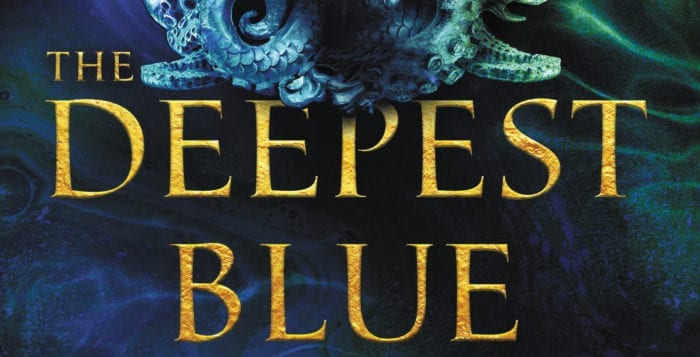Theatre Three, 412 Main St., Port Jefferson will hold an open cast call for “Jekyll & Hyde: The Musical” on Wednesday, July 10 at 7 p.m. and Saturday, July 13 at 1 p.m. Seeking actors-singers who move well (ages 17 to 60s). All roles open except General Glossop and Lady Beaconsfield. Prepare 32 bars from the song of your choice and be prepared to move. Please bring picture/resume if available. Rehearsals begin in late July. Performances will be held from Sept. 14 to Oct. 26. For further details, call 631-928-9202 or visit www.theatrethree.com/auditions.html.
Medical Compass: Get your toes ready for summer
Toenail fungus can have medical implications
By David Dunaief, M.D.

Summer is almost here, and millions of Americans are beginning to expose their toes. Some are more self-conscious about it because of a disease called onychomycosis, better known as nail fungus.
Nail fungus usually affects toenails but can also affect fingernails. It turns the nails yellow, makes them potentially brittle, creates growth underneath the nail (thickening of the nails) and may cause pain.
Many consider getting treatment for cosmetic reasons, but there are also medical reasons to treat, including the chronic or acute pain caused by nail cutting or pressure from bedsheets and footwear. There is also an increased potential risk for infections, such as cellulitis, in those with compromised immune systems (1).
Onychomycosis is not easy to treat, although it affects approximately 8 percent of the population (2). The risk factors are unclear but may relate to family history, tinea pedis (athlete’s foot), older age, swimming, diabetes, psoriasis, suppression of the immune system and/or living with someone affected (3).
Many organisms can affect the nail. The most common class is dermatophytes, but others are yeast (Candida) and nondermatophytes. A KOH (potassium hydroxide) preparation can be used to differentiate them. This is important since some medications work better on one type than another. Also, yellow nails alone may not be caused by onychomycosis; they can be a sign of psoriasis.
When considering treatment, there are several important criteria, including effectiveness, length of treatment and potential adverse effects. The bad news is that none of the treatments are foolproof, and the highest “cure” rate is around two-thirds. Oral medications tend to be the most efficacious, but they also have the most side effects. The treatments can take from around three months to one year. Unfortunately, the recurrence rate of fungal infection is thought to be approximately 20 to 50 percent with patients who have experienced “cure” (4).
Oral antifungals
There are several oral antifungal options, including terbinafine (Lamisil), fluconazole (Diflucan) and itraconazole. These tend to have the greatest success rate, but the disadvantages are their side effects. In a small but randomized controlled trial (RCT), terbinafine was shown to work better in a head-to-head trial than fluconazole (5). Of those treated, 67 percent of patients experienced a clearing of toenail fungus with terbinafine, compared to 21 and 32 percent with fluconazole, depending on duration. Patients in the terbinafine group were treated with 250 mg of the drug for 12 weeks. Those in the fluconazole group were treated with 150 mg of the drug for either 12 or 24 weeks, with the 24-week group experiencing better results.
The disadvantage of terbinafine is the risk of potential hepatic (liver) damage and failure, though it’s an uncommon occurrence. Liver enzymes need to be checked while using terbinafine.
Another approach to reducing side effects is to give oral antifungals in a pulsed fashion. In an RCT, fluconazole 150 or 300 mg was shown to have significant benefit compared to the control arm when given on a weekly basis (6). However, efficacy was not as great as with terbinafine or itraconazole (7).
Topical medication
A commonly used topical medication is ciclopirox (Penlac). The advantage of this lacquer is that there are minor potential side effects. However, it takes approximately a year of daily use, and its efficacy is not as great as oral antifungals. In two randomized controlled trials, the use of ciclopirox showed a 7 percent “cure” rate in patients, compared to 0.4 percent in the placebo groups (8). There is also a significant rate of fungus recurrence. In one trial, ciclopirox had to be applied daily for 48 weeks in patients with mild to moderate levels of fungus.
Laser therapy
Of the treatments, laser therapy would seem to be the least innocuous. However, there are very few trials showing significant benefit with this approach. A study with one type of laser treatment (Nd:YAG 1064-nm laser) did not show a significant difference after five sessions (9). This was only one type of laser treatment, but it does not bode well. The advantage of laser treatment is the mild side effects. The disadvantages are the questionable efficacy and the cost. We need more research to determine if they are effective.
Alternative therapy
Vicks VapoRub may have a place in the treatment of onychomycosis. In a very small pilot trial with 18 patients, 27.8 percent or 5 of the patients experienced complete “cure” of their nail fungus (10). Partial improvement occurred in the toenails of 10 patients. The gel was applied daily for 48 weeks. The advantages are low risk of side effects and low cost. The disadvantages are a lack of larger studies for efficacy, the duration of use and a lower efficacy when compared to oral antifungals.
None of the treatments are perfect. Oral medications tend to be the most efficacious but also have the most side effects. If treatment is for medical reasons, then oral may be the way to go. If you have diabetes, then treatment may be of the utmost importance.
If you decide on this approach, discuss it with your doctor; and do appropriate precautionary tests on a regular basis, such as liver enzyme monitoring with terbinafine. However, if treatment is for cosmetic reasons, then topical medications or alternative approaches may be the better choice. No matter what, have patience. The process may take a while; nails, especially in toes, grow very slowly.
References:
(1) J Am Acad Dermatol. 1999 Aug.;41:189–196; Dermatology. 2004;209:301–307. (2) J Am Acad Dermatol. 2000;43:244–248. (3) J Eur Acad Dermatol Venereol. 2004;18:48–51. (4) Dermatology. 1998;197:162–166; uptodate.com. (5) Pharmacoeconomics. 2002;20:319–324. (6) J Am Acad Dermatol. 1998;38:S77. (7) Br J Dermatol. 2000;142:97–102; Pharmacoeconomics. 1998;13:243–256. (8) J Am Acad Dermatol. 2000;43(4 Suppl.):S70-S80. (9) J Am Acad Dermatol. 2013 Oct.;69:578–582. (10) J Am Board Fam Med. 2011;24:69–74.
Dr. Dunaief is a speaker, author and local lifestyle medicine physician focusing on the integration of medicine, nutrition, fitness and stress management. For further information, visit www.medicalcompassmd.com or consult your personal physician.
Ask the Vet: An update on vaccines 2019
By Matthew Kearns, DVM

I often get asked, “Are vaccines really necessary for my pet every year?” The answer is, “Yes and no.” This two-part series will hopefully expand on that murky answer.
A brief review of how the immune system works is a good place to start. The immune system has two major components: humoral and cell mediated. Humoral immunity refers to the portion of the immune system that produces antibodies. Antibodies are proteins that are made by certain white blood cells against specific diseases (viral, bacterial, fungal, etc.).
These proteins attach to these foreign invaders and release chemical signals to recruit a different set of white blood cells to attack. This other set of white blood cells are labeled as cell-mediated immunity and they attack and kill foreign invaders before they can harm our pets.
The body needs BOTH humoral and cell-mediated immunity to effectively fight infections; without one, the other is useless. Vaccines are designed to stimulate both components of the immune system without causing disease or infection.
Once the vaccination is administered, our pet’s immune system processes these proteins to produce antibodies against these invaders and prime the white blood cells to be ready to fight if they are exposed to infection naturally.
Here is the problem. When measuring the body’s ability to fight infection, veterinarians can only measure one part of the immune system: the humoral component, or antibodies. Antibodies are proteins; so a blood sample is sent to the laboratory to measure antibody titers produced by the immune system against certain diseases. If the level is high enough, it is deemed “adequate titers.”
Unfortunately, since antibodies are only signals to the cell-mediated component of the immune system, adequate antibody levels do not guarantee the ability to fight infection in all cases. There are both human and veterinary studies that back this finding.
The good news is that there are also studies that have proven that inadequate antibody titers does not always mean that your pet will become sick even if exposed to certain infections. Sound confusing? If it makes you feel any better, this is confusing to us veterinarians and we’re supposed to be the experts.
Veterinarians will follow the recommendations of the vaccine manufacturer, and the manufacturers have made it a little easier with vaccine trials. Vaccine trials refer to studies where, after administering a vaccine not only are antibody levels measured, but patients are also exposed to the actual infection to see if they develop symptoms. The initial series of vaccines and recommended updates are based on these trials.
I hope this gives you the knowledge base to continue the discussion in my next article. It will discuss in more depth concerns about how often vaccines should be given, risk factors in the administration of vaccines and both New York State and Suffolk County laws on mandatory vaccination.
Dr. Kearns practices veterinary medicine from his Port Jefferson office and is pictured with his son Matthew and his dog Jasmine. Have a question for the vet? Email it to [email protected] to see his answer in an upcoming column.
Shelter Pet of the Week: May
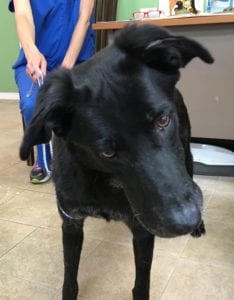 MEET MAY!
MEET MAY!
This week’s shelter pet is May, a 5-year-old Lab mix currently looking for a forever home filled with happiness and unconditional love!
Rescued off of the streets of Puerto Rico, May is a very sweet dog with lots of love to offer. She is the perfect walking companion and loves to play. A recent arrival at the shelter, she has already wiggled her way into the staff’s hearts! Why not stop by and say hello?
May comes spayed, microchipped and is up to date on all her vaccines.
Kent Animal Shelter is located at 2259 River Road in Calverton. The adoption center is open seven days a week from 10 a.m. to 4 p.m. For more information on May and other adoptable pets at Kent, call 631-727-5731 or visit www.kentanimalshelter.com.
‘Field of Dreams’ returns to the big screen
In honor of its 30th anniversary, “Field of Dreams” will be screened at more than 600 select theaters nationwide on Father’s Day, Sunday, June 16, and Tuesday, June 18, courtesy of Turner Classic Movies and Fathom Events.
The film tells the tale of Ray Kinsella (Kevin Costner) as he follows a vision and a mysterious voice (“If you build it, he will come.”) encouraging him to build a baseball diamond in his cornfield. Along the way, he encounters ghosts of famous baseball players, including “Shoeless Joe” Jackson, and wrestles with his rocky relationship with his late father.
Upon its release in 1989, the film earned critical acclaim, an eventual Oscar nomination for Best Picture and the adoration of dads everywhere. A heartwarming experience that has moved critics and audiences like no other film of this generation, “Field of Dreams” is a glowing tribute to all who dare to dream.This special two-day event includes exclusive insight from TCM Primetime host Ben Mankiewicz.
Participating movie theaters in our neck of the woods include AMC Loews Stony Brook 17, 2196 Nesconset Highway, Stony Brook on June 16 at 1 and 4 p.m. and at 4 and 7 p.m. on June 18; Island 16 Cinema de Lux, 185 Morris Ave., Holtsville and Farmingdale Multiplex Cinemas, 1001 Broadhollow Road, Farmingdale on June 18 at 7 p.m.
To purchase your ticket in advance, visit www.fathomevents.com.
Book Review: ‘The Deepest Blue’
Reviewed by Jeffrey Sanzel

In “The Deepest Blue,” author Sarah Durst has fashioned an enthralling fantasy in a striking and brutal world, rife with dangers that are deadly and ever present. The magic that is part of its existence only defends so much; it is strength and intelligence that become the greatest protections.
Durst outlines with quick, intense strokes the history. Originally, Renthia was four countries and the queens tamed the spirits of earth, tree, air, water, fire and ice. When the wild, unclaimed spirits that lived in the sea attacked the land, the queens repelled them — destroying many and compelling the others into a deep slumber in “the Deepest Blue.” These powerful spirits existed before the time of mankind, and they ache with an ancient hunger.
These spirits have an unquenchable urge to create and destroy. A wind spirit is described: “Screaming as it came, it flew across the seas and onto the shore. It bent the trees until they bowed, their tips touching the sand. It tore at the houses, ripping the shutters from their windows and the clay tiles from the roofs.” A water spirit is shown: “Rising up in massive swells, the waves slammed into the island, flooding the homes that were closest to the shore, destroying gardens and drowning livestock.” Ultimately, “all were deadly.”
In the matriarchal mythology, there are select women who have the power to thwart and even annihilate the attackers. When they show their powers, they are taken away and given two choices: to be taken to the Island of Testing, Akena, to train to be an heir, or to forsake family and identity and become one of The Silent Ones, the queen’s white-masked and gray-robed enforcers. The chances of actually surviving to become an heir are slim; so many choose the latter and join the disturbing Silent Ones — standing “as if they were stone” — who come when it is sensed that someone has revealed her power.
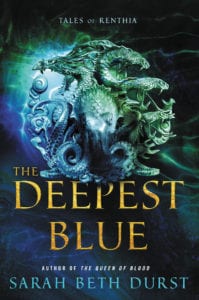 Heirs “… were, in many ways, above the law. They were trained to fight threats to the islands. Trained to fight spirits …” It is the strongest women who need to become heirs, to fight the wildest and most dangerous of spirits. Whenever wild spirits are going to attack the islands, the queen becomes aware of their encroaching presence and sends the heirs to subdue them.
Heirs “… were, in many ways, above the law. They were trained to fight threats to the islands. Trained to fight spirits …” It is the strongest women who need to become heirs, to fight the wildest and most dangerous of spirits. Whenever wild spirits are going to attack the islands, the queen becomes aware of their encroaching presence and sends the heirs to subdue them.
At the center of the story is Mayara. The book opens on the day of her wedding to childhood sweetheart, Kelo, an artisan who makes charms that repel the spirits. Mayara’s parents are in mourning for Elorna, Mayara’s older sister, who was selected to fight the spirits but lost that battle. Like the others so endowed, the power is as much a gift as a curse.
Mayara’s intuits the malevolent forces: “She sensed the wild spirits swirling around them … She felt their unbridled hatred and rage pour into her until she thought she’d choke on it.” She perceives their existence: “… they weren’t thoughts, precisely. It was a whirlwind of need and want. They wanted blood, death, and pain.” Mayara can feel the spirits and the “bottomless hunger and rage.”
Like so many, Mayara, had hidden her powers and only unleashed them when her island is under siege. Thus begins Mayara’s journey. Confronted, she makes the choice to train to be an heir. From there, the book opens up to her training then the court beyond. It is a wild, fascinating adventure, with honest, inventive individuals and sharp plot twists, building to a thrilling conclusion.
The characters are extremely well drawn. When we finally meet the Queen, Asana, she is portrayed not as villainous but as conflicted and dimensional, struggling against terrible choices and political intrigue. Her confidante, Lady Garnah, is a wonderful, wicked creation, offering the book’s humorous edge. An often impenetrable anti-hero of fascinating depth, she is deeply devoted and yet amoral, making her all the more terrifying. In one of the most original sequences, Lady Garnah manipulates from behind the scenes, engineering life-and-death revelations.
Themes of sacrifices — both large and small and made for the greater good — play out against the strength of the third choice — that actions do not necessarily come down to one or the other but something that is “more than.” “The Deepest Blue” is a wholly satisfying read. It is a tale of fantasy rooted in human truths.
Here, Durst eloquently and simply sums up our complex existence: “Red spots stained the sand. A drop of blood hit Roe’s forehead. It dripped in a streak down her temple and then mixed with her tears.”
Sarah Beth Durst is the award-winning author of 18 fantasy books for kids, teens and adults. The master storyteller lives in Stony Brook with her husband, her children and her ill-mannered cat. Recommended for adults, “The Deepest Blue,” Book 4 of four in the Queens of Renthia Series, is available online at Barnes & Noble and Amazon. For more information, visit www.sarahbethdurst.com.
Kelley’s Heroes raises funds for LI Alzheimer’s Foundation
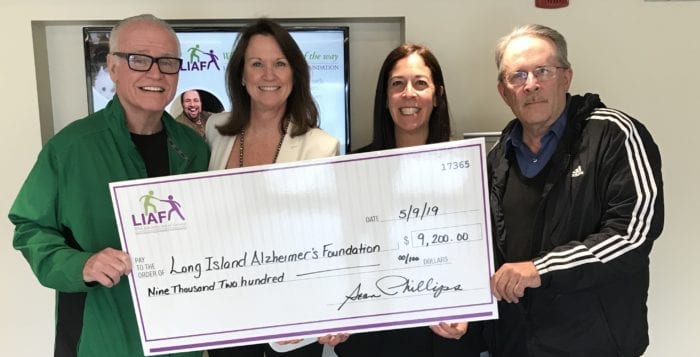
As a member of the nonprofit organization Kelley’s Heroes, St. James resident Sean Phillips recently initiated a Charity Walk in memory of his mother, who suffered from Alzheimer’s disease, and helped raise $9,200 for the Long Island Alzheimer’s Foundation, of which he is a former director of development.
Together with another Kelley’s Heroes member, Bill Flood, Sean organized the annual walk, which drew many supporters of Kelley’s Heroes and LIAF to the Walt Whitman Trail in eastern Nassau County.
The check was presented at the Alzheimer Foundation’s Westbury office on May 16.
“We are thankful to Sean Phillips and his family for their continued commitment to LIAF, and Bill Flood for his hard work and dedication to making this event so successful,” said LIAF Executive Director Tori Cohen.
“It is always gratifying to know that we’ve made a difference in the lives of our participants and their families, and the families never forget that, as demonstrated by this generous donation,” she added.
Caroline Doctorow heads to Grounds & Sounds
Grounds & Sounds Café, located at the Unitarian Universalist Fellowship, 380 Nicolls Road, East Setauket will present a special benefit concert fundraiser featuring Caroline Doctorow & The Ballad Makers (Americana folk music) on Friday, June 14 at 8 p.m. Tickets are $15 per person at www.groundsandsounds.org or at the door. Proceeds will benefit Grounds & Sounds Café. For further information, call 631-751-0297.
Brendan Boyce brings rare pathology expertise to Stony Brook

By Daniel Dunaief
Chances are high you won’t see Dr. Brendan Boyce when you visit a doctor. You will, however, benefit from his presence at Stony Brook University Hospital and on Long Island if you have bone or soft tissue lesions and you need an expert pathologist to diagnose what might be happening in your body.
A professor at the University of Rochester for 20 years, the internationally renowned Boyce joined the Renaissance School of Medicine at SBU in November, splitting his time between Rochester and Long Island.
Dr. Ken Shroyer, the chair of the Department of Pathology, reached out to Boyce with an unusual bone tumor case last spring. After that discussion, the two considered the possibility of Boyce adding his bone and soft tissue pathology expertise to the growing department. Boyce was receptive to the idea, particularly because his daughter Jacqueline lives in Woodbury with two of his seven grandchildren.
For local patients, Boyce adds a relatively rare expertise that could shorten the time for a diagnosis and improve the ability for doctors to determine the best course of action during surgeries.
“While the patient is already undergoing a surgical procedure, the preliminary diagnosis can guide the process of the surgery,” said Shroyer. “That’s difficult to achieve if we are dependent on an outside consultant. It happens, more or less in real time, if Boyce can look at the slides as they are being prepared and while the patient is still on the operating table.”
Prior to Boyce’s arrival, Stony Brook functioned the same way most academic medical centers do around the country when it came to bone and soft tissue cancers or disorders.
“There are only a handful of soft tissue and bone surgical pathology subspecialists around the country,” Shroyer said. “There’s an insufficient number of such individuals to make it practical like this at every medical school in the country.”
Many of these cases are “rare” and most pathologists do not see enough cases to feel comfortable diagnosing them without help from an expert, Boyce explained.
Boyce “was recruited here to help this program at Stony Brook continue to grow,” Shroyer said. “He enhances the overall scope of the training we can provide to our pathology residents through his subspecialty expertise. Everything he does here is integrated with the educational mission” of the medical school.
While bone and soft tissue tumors are relatively rare compared to other common cancers, such as colorectal or breast cancer, they do occur often enough that Stony Brook has developed a practice to diagnose and treat them, which requires the support of experts in pathology. Stony Brook hired Dr. Fazel Khan a few years ago as the orthopedic surgeon to do this work.
“To establish a successful service, there needs to be a mechanism to financially support that service that’s not solely dependent on the number of cases provided,” Shroyer said.
Boyce’s recruitment was made possible by “investments from Stony Brook University Hospital and the School of Medicine, in addition to support from the Department of Orthopedics and Pathology.”
Shroyer was thrilled that Boyce brings not only his expertise but his deep and well-developed background to Stony Brook.
It was “important to me that he was not only a highly skilled surgical pathologist, but also was a physician scientist, which made him a very attractive recruit,” Shroyer said.
Indeed, while Boyce will provide pathology services to Stony Brook, he will continue to maintain a laboratory at the University of Rochester.
Boyce’s research is “focused on the molecular mechanisms that regulate the formation of osteoclasts and their activity,” Boyce said. He emphasizes the effects of pro-inflammatory cytokines and NF-Kappa B, which are transcription factors that relay cytokine signaling from the cell surface to the nucleus.
These factors drive osteoclast formation and activity in conditions affecting the skeleton, which include rheumatoid arthritis, postmenopausal and age-related osteoporosis and cancers affecting the skeleton.
Osteoclasts degrade bone, which carve out deformities or the equivalent of potholes in the bone, while osteoblasts help rebuild the bone, repaving the equivalent of the roads after the osteoclasts have cleared the path. There are over a million sites of bone remodeling in the normal human skeleton and the number of these increases in diseases.
Boyce has studied various aspects of how bone remodeling occurs and how it becomes disturbed in a variety of pathological settings by using animal models. He uses cellular and molecular biological techniques to answer these questions.
On behalf of Boyce and three other researchers, the University of Rochester Medical Center just finished licensing a compound to a company in China that he recently contacted, which will do animal studies that will test the toxicity of a treatment for myeloma.
At this point, Boyce is applying in July for another five-year grant from the National Institutes of Health for research in his Rochester lab. He hopes to renew another NIH grant next year, which he has for four years. After he renews that grant, he will continue writing up papers and studies with residents and collaborating on basic science at Stony Brook as well.
Boyce and his wife Ann, have three children and seven grandchildren. Originally from Scotland, Boyce has participated in Glasgow University Alumni activities in the United States, including in New York City, where he walked in this year’s Tartan Parade with his daughters and their children.
As for his work at Stony Brook, Boyce is enjoying the opportunity to contribute to the community.
“The setting and faculty are very nice and congenial and I’ve been made to feel welcome,” he said.
WMHO presents annual Jewels & Jeans Gala June 19

This year is a special one for the Ward Melville Heritage Organization. Based in Stony Brook Village, the not-for-profit organization is celebrating its 80th anniversary of protecting and preserving historic and environmentally sensitive properties deeded to it by Ward Melville, whose philanthropic works and foresight are legendary.
Melville’s visions for the Stony Brook area included the establishment of a world-renowned education institution, Stony Brook University (to which he donated 400 acres of land as well as personal funding); the protection of environmentally sensitive areas; educational and cultural programs; and the preservation of historic properties, dating back to the Revolutionary War, for present and future generations to experience.

The celebration with kick off with its 11th annual Jewels & Jeans Gala at Flowerfield in St. James on June 19 from 6 to 10 p.m. honoring Katharine Griffiths, executive director of Avalon Park & Preserve in Stony Brook; Andy Polan, president of the Three Village Chamber of Commerce; WMHO trustee Anna Kerekes; and Leah Dunaief, editor and publisher of Times Beacon Record News Media.
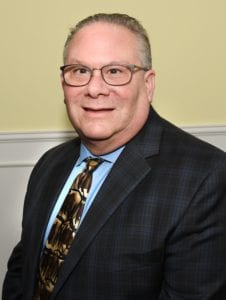
The evening will feature a cocktail hour with entertainment by Tom Manuel and The Jazz Loft All Stars. An exciting night follows with dinner, meeting this year’s honorees, raffles, a silent auction and a live auction. Prizes include a Lessing’s Fine Dining Experience for three $300 gift certificates at Mirabelle Restaurant at the Three Village Inn, Sandbar Restaurant and the View Restaurant; dinner for eight by personal Chef Lance; a four-night stay for 10 at The Dome; a VIP stargazing experience at Avalon Park & Preserve; and one night ocean view room at Gurney’s Montauk.
The fundraising goal for this 80th anniversary of the organization will be a net of $80,000. All proceeds will be used for much needed restorations to three of WMHO’s historic properties, each of which is on the New York State and National Register of Historic Places.
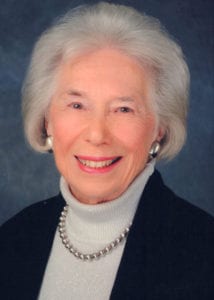
The Brewster House, c. 1665, is in dire need of siding and chimney repairs; the Thompson House, c. 1709, needs extensive restorations to its chimney; and the Stony Brook Grist Mill, c. 1751, the most complete working grist mill on Long Island, requires repairs to the very intricate mechanisms that are still in use today.
Funds are needed as well to continue producing WMHO’s 70-plus award-winning educational and cultural programs each year.
Tickets are $195 per person and sponsorships are also available. For more information, please call 631-751-2244 or visit www.wmho.org/jewels-jeans/.







